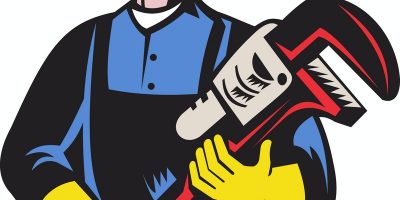

Sometimes you need a plumber. Plumbing is a craft that takes precision, experience, knowledge, and skill. It is not something to take lightly. A plumbing repair can be time-consuming and expensive. It can also be potentially hazardous to your health if it is not appropriately handled. The best plumbing repairs are inevitable at some point in time for most households. Many things can happen in the house that might cause a leak or clog in the pipes. This includes natural disasters like floods, heavy rain or snowstorms, or even everyday use of household fixtures like baths, sinks, toilets, etc.
The average plumbing cost per fixture is around $100 to $600 when you include installation costs. So when you have more than one fixture in need of repair, it’s easy to see how this could rack up hundreds of dollars.
We all know the importance of a plumbing system. They help us get basic needs met, such as cooking, bathing, and laundry by delivering water from the water mains to the fixtures in our homes. Plumbing repair can add up quickly due to the many different bathroom parts store. To save money on average plumbing cost per fixture, it is best to take care of any problems right away before they become worse and more expensive and work with the best and cheapest plumbers near me.
Plumbing is a common problem with clogs or blockages in drains, toilets, sinks, bathtubs, and showers. They are usually caused by hair or grease buildup within the drainpipe. Luckily, there are ways you can avoid this problem, like using drain hair catchers or making sure that your pipes are not too long for their diameter.

Calling a plumber is not a cheap endeavor. On average, a plumber charges $45 to $150 per hour of their service. While some plumbing repairs must be handled by a professional, many of the most common plumbing services that professionals are called for are repairs that you could do yourself, with a few tools and a little know-how. To help you determine if and how to make the repair yourself, and when it is time to call in a pro, we have provided a quick guide to DIY plumbing repairs below.

The DIY Plumber’s Toolbox
Most common plumbing issues can be handled with the following tools:
- Plungers for pushing clogs through the pipes. (Due to the nature of the work, you want to have a separate plunger for the sink and the toilet.)
- A good pipe wrench for loosening or tightening the pipe fittings.
- A caulking gun and sealant, for sealing and waterproofing your plumbing.
- Basic tools like pliers, screwdriver, and utility knife for anything else that arises.

Common Plumbing Issues
-
- Leaky Faucets
On average, having a leaky faucet wastes about 3,000 gallons of water every year. If you’re wondering, that’s the equivalent of 180 showers. Most commonly, the culprit behind a leaky faucet is a simple rubber washer that needs to be replaced. To make sure you get the right parts, shut the water off at the valve, take the faucet apart, and take the problematic washer with you to the hardware store.We’ll throw this in for free: It’s helpful if you snap a picture on your phone of each step while taking it apart, so that you know exactly how to get it back together.
- Leaky Faucets
-
- Clogged Drains
Before you call a plumber for backed up drain, try cleaning the pipes out yourself. Often, a simple plunger will effectively push the clogs through the pipes. If that does not work, you can find an inexpensive cable auger at your local hardware store that should clear out the blockage. If snaking the drains with an auger does not work, the problem could be an issue with the air pressure in your plumbing system, which is regulated by the plumbing vent. Problems with the plumbing vent should be handled by a professional plumber.Before any of this is necessary, you can do yourself a real favor by avoiding drain clogs altogether. Never put oils and fats in the drain; they are not water soluble, so they build up and cause blockage over time. A simple hair trap in your bathroom sinks is a good way to prevent larger objects from clogging the drains. It is also a good idea to run baking soda and vinegar through your drains on a weekly basis to dissolve any buildup.
- Clogged Drains
- Running Toilet
If you remove the cover from the back of the toilet, you will see a rubber ball (called a floater switch) that floats on the top of the water and is attached to a rubber plug (called stop valve). When the tank is full of water, the floater switch reaches the top of the tank and pushes the stop valve into place which turns the water off. When the toilet doesn’t stop running, it is almost definitely an issue with either the floater switch or the stop valve; switching this entire assembly out is inexpensive and so simple that even a novice could do it.
Do you know of any other plumbing DIYs that we didn’t mention? Please share them with us in the comment section below!



Leave a Reply
You must be logged in to post a comment.